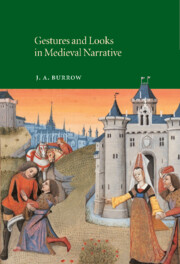4 - Two Middle English narratives
Published online by Cambridge University Press: 22 September 2009
Summary
At a moment in Troilus and Criseyde when Chaucer is passing, as he says, ‘shortly’ over a period in the relationship between the two lovers, he offers readers an apology for such summary treatment:
But now, paraunter, som man wayten wolde
That every word, or soonde, or look, or cheere
Of Troilus that I rehercen sholde,
In al this while unto his lady deere –
I trowe it were a long thyng for to here –
Or of what wight that stant in swich disjoynte,
His wordes alle, or every look, to poynte.
For sothe, I have naught herd it don er this
In story non, ne no man here, I wene;
And though I wolde, I koude nought, ywys;
For ther was som epistel hem bitwene,
That wolde, as seyth myn autour, wel contene
Neigh half this book, of which hym liste nought write.
How sholde I thanne a lyne of it endite?
Concerned here with exchanges between Troilus and Criseyde, Chaucer for a moment plays with the idea of total narrative, in which every kind of communication, verbal and non-verbal alike, would be registered: all their spoken words, messages, and letters, and also all their looks and facial expressions. He says that he has not found this done in any past narrative, and could not himself do it now, even if he wanted to.
- Type
- Chapter
- Information
- Gestures and Looks in Medieval Narrative , pp. 114 - 155Publisher: Cambridge University PressPrint publication year: 2002



